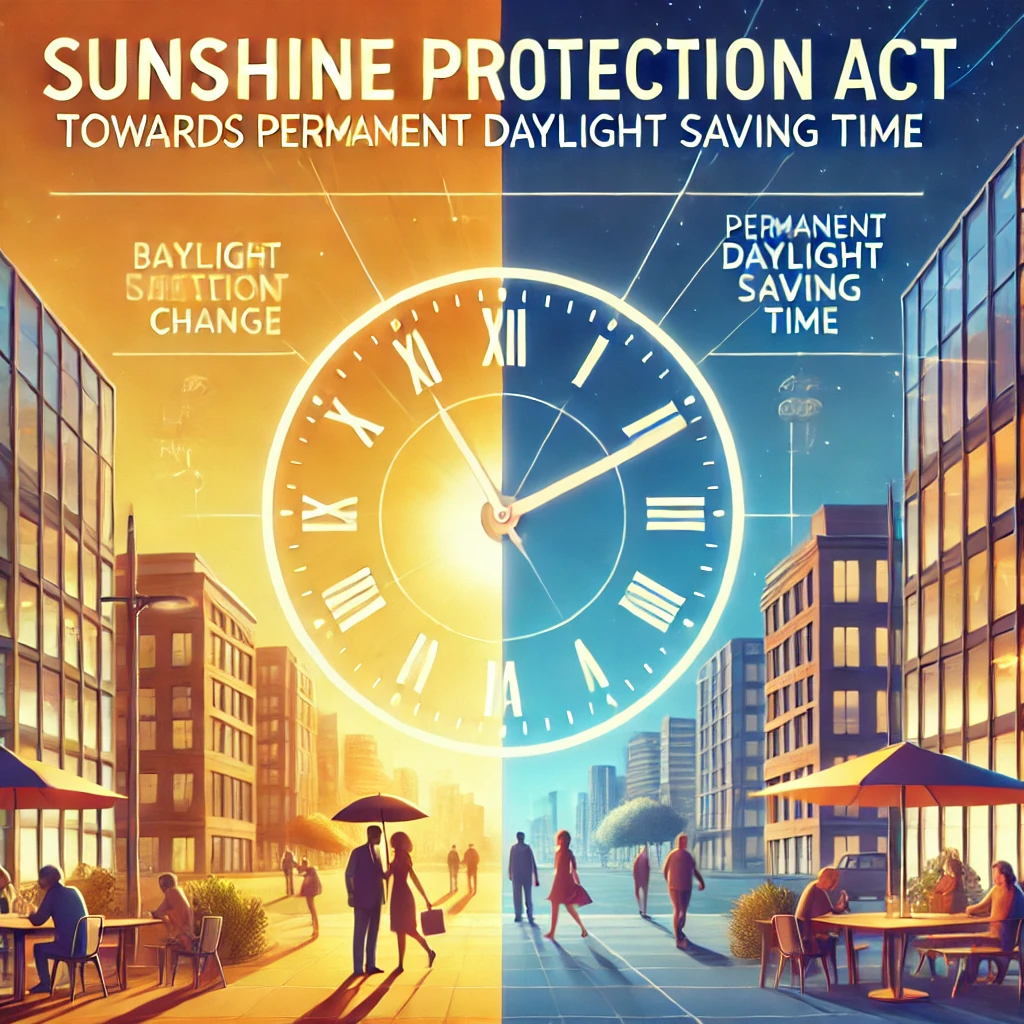Learn about the latest updates on the Sunshine Protection Act Status and its potential to make daylight saving time permanent. Discover the benefits, challenges, and what this change could mean for your daily life. Get all the insights on this proposed law that aims to stop the clock changes and bring more daylight to your evenings.
Introduction
Have you ever groaned at the thought of changing your clocks twice a year? Many people are asking why we still do this, and that’s where the Sunshine Protection Act comes in. This act, if passed, would end the need to “fall back” and “spring forward” by making daylight saving time permanent. In this post, we’ll take a look at the current status of the Sunshine Protection Act, the reasons behind it, and what it would mean for our everyday lives. So, let’s dive into the latest updates and what they mean for you.
What is the Sunshine Protection Act?
The Sunshine Protection Act is a bill proposed in the United States Congress that aims to make daylight saving time (DST) permanent, eliminating the need to change the clocks twice a year. DST is the period when we “spring forward” an hour to make use of longer daylight hours in the evenings. The act would stop this change and keep the country on DST year-round.
Why Do We Change the Clocks?
The original idea of daylight saving time was to make the most out of natural daylight. By “springing forward” in March, people can enjoy more daylight in the evenings, which can lead to energy savings, reduced car accidents, and a boost in mood and productivity.
However, the twice-yearly time change is unpopular with many people. Studies have shown that the shift in time can disrupt sleep patterns, cause confusion, and even increase the risk of heart attacks and strokes in the days following the change. This has led to a growing push for a permanent time setting.
The Current Status of the Sunshine Protection Act
Recent Legislative Progress
The Sunshine Protection Act was reintroduced in 2023, led by a bipartisan group of lawmakers who believe the benefits of permanent daylight saving time outweigh the downsides. However, despite its popularity, the bill hasn’t yet become law. The act has faced various hurdles, with some regions and lawmakers arguing that the benefits of daylight saving time differ across the country.
As of 2024, the bill is still in discussion, and its future is uncertain. Many states are supportive, but it will take further discussions and approvals from Congress for any permanent changes to occur.
State-Level Initiatives
Several states are ready to make daylight saving time permanent if Congress allows it. States like Florida, Washington, and California have all passed legislation or resolutions in support of permanent DST, but they need federal approval to put it into action.
Some states, particularly those in northern regions, are concerned that permanent DST would mean dark winter mornings, which could be challenging, especially for students heading to school.
Why Make Daylight Saving Time Permanent?
There are several compelling reasons why advocates are pushing for permanent DST:
- Improved Sleep Patterns: Ending the twice-yearly time change can reduce the disruptions in sleep patterns and overall health issues related to the switch.
- Economic Benefits: With more daylight in the evening, people may be more likely to go out, increasing consumer spending and boosting local economies.
- Energy Savings: Extended daylight hours can reduce the need for artificial lighting, leading to energy savings in households and businesses.
- Reduced Crime Rates: Studies have found that longer daylight hours can reduce crime rates since people are less likely to commit crimes in well-lit conditions.
- Mental Health and Productivity: More evening daylight can boost people’s mood and productivity.
Concerns Over Permanent DST
While there are clear benefits to making DST permanent, it’s not without drawbacks:
- Dark Winter Mornings: In many parts of the U.S., permanent DST would mean very dark mornings during the winter, which could make it difficult for people to start their day and could also increase road hazards.
- Impact on Farmers: Some in the agriculture sector have raised concerns, as their schedules are heavily influenced by sunlight and not by the clock.
- Regional Differences: The impact of DST varies across the country. Some states, particularly in the north, experience long dark periods in winter mornings, making the idea of permanent DST less appealing.
What Would Life Look Like With Permanent Daylight Saving Time?
If the Sunshine Protection Act passes, our schedules would feel different, especially during winter. Mornings in December and January could be much darker, but evenings would have more daylight. This would mean fewer early sunsets, especially for those who struggle with Seasonal Affective Disorder (SAD), which often worsens during dark winter months.
For families and working individuals, this change could mean more time in the evening for activities, potentially boosting overall well-being. However, parents and school systems would need to make adjustments for darker mornings.
Conclusion
The Sunshine Protection Act brings both excitement and questions. Many people are eager to do away with the twice-yearly clock changes, and the potential benefits of permanent DST are attractive. Still, challenges remain in making a one-size-fits-all solution for a country as large and diverse as the U.S.
While the Sunshine Protection Act isn’t law yet, its progress shows that we’re rethinking old routines for a modern lifestyle. As discussions continue, we may be closer to a future where we leave the clock changing behind.
Frequently Asked Questions (FAQs)
Q: What is the Sunshine Protection Act?
A: The Sunshine Protection Act is a proposed law that aims to make daylight saving time (DST) permanent in the U.S., ending the need for biannual clock changes.
Q: Why hasn’t the Sunshine Protection Act passed yet?
A: Although there is bipartisan support, the act faces challenges due to regional differences and concerns about dark winter mornings in some areas.
Q: Will permanent DST save energy?
A: Yes, extended daylight in the evenings can reduce the need for artificial lighting, leading to energy savings.
Q: What are the main benefits of permanent DST?
A: Benefits include improved sleep patterns, better mental health, economic gains, and reduced crime rates due to longer daylight hours in the evenings.
Q: Are there any downsides to permanent DST?
A: Yes, permanent DST could lead to dark winter mornings, making early schedules challenging for some regions, especially in northern states.
Q: Which states support the Sunshine Protection Act?
A: States like Florida, Washington, and California have passed measures in favor of permanent DST, but they await federal approval.










